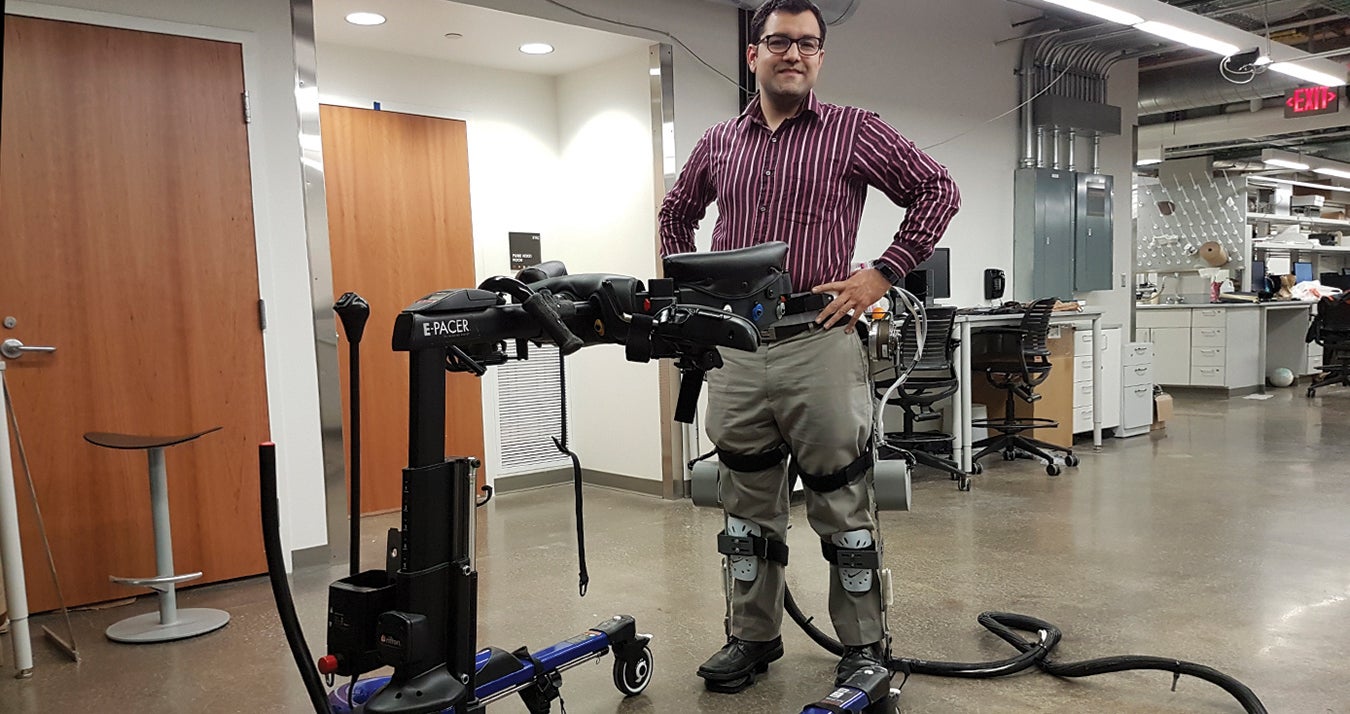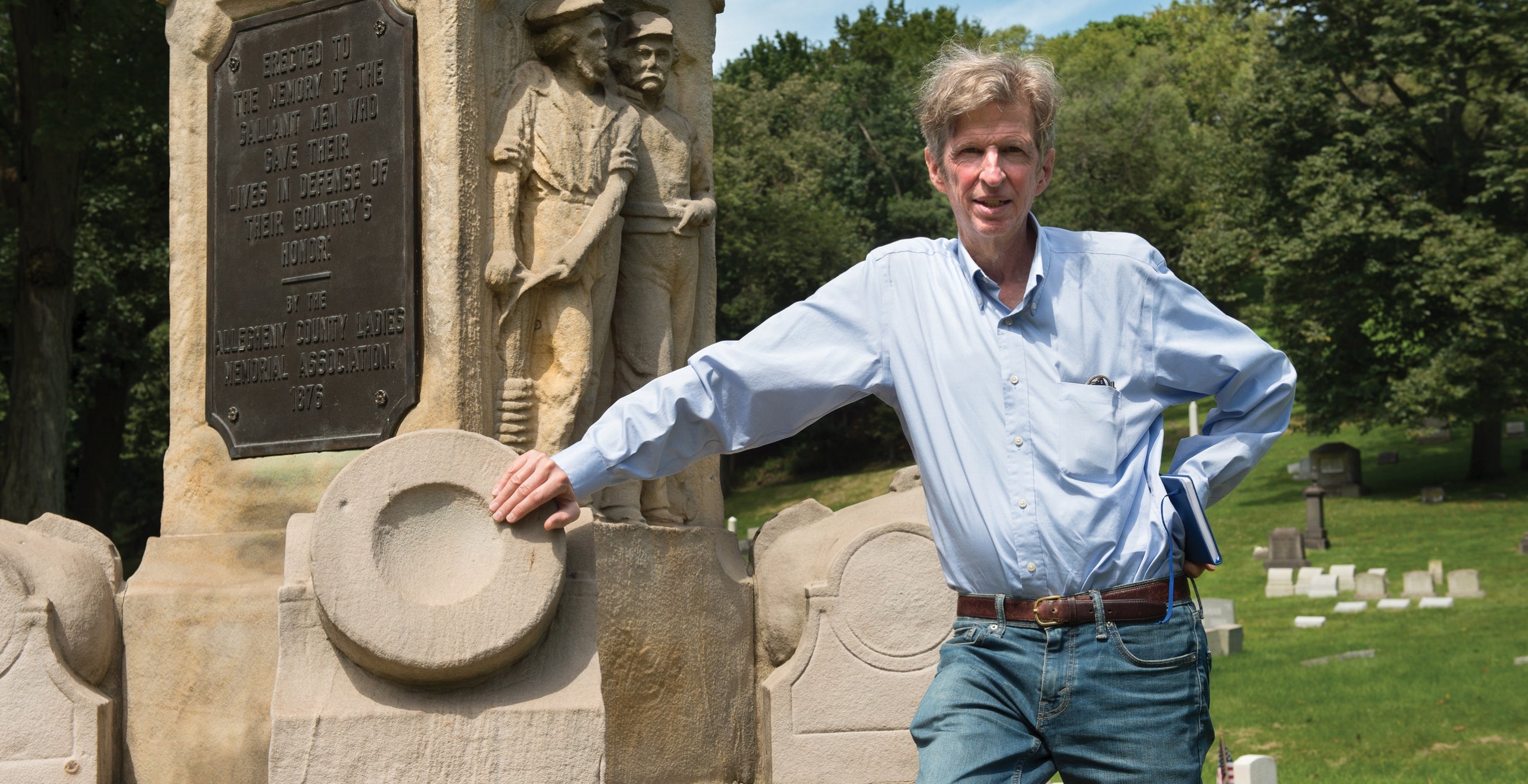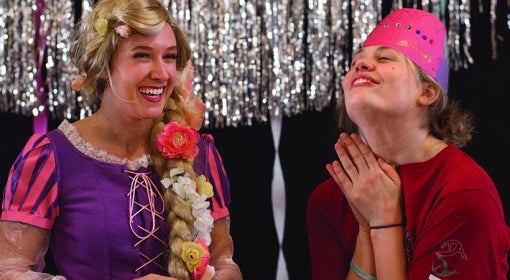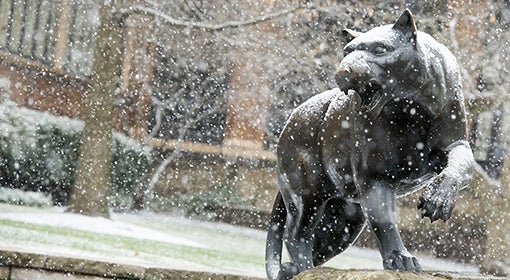The young man was fascinated by the new monument in the Washington, D.C., National Mall. Its design was straightforward: a long, V-shaped wall of mirror-like black granite, set into a grassy knoll and etched with thousands of names. Despite its simplicity, the Vietnam Veterans Memorial was already the object of much debate. While some viewed it as a somber and emotional alternative to traditional war monuments, others believed that the dark color and below-ground placement were disrespectful to those it meant to honor.
As a young Kirk Savage considered the monument, he came to believe that the controversy surrounding it was less about aesthetics and more about questions of representation. His interest inspired him to examine how history is depicted in public spaces and sparked an academic career dedicated to the study of commemorative art in the United States.
Today, Savage is a professor in Pitt’s Department of History of Art and Architecture and a renowned expert on public monuments. What may have once been a niche field of research has recently entered the public spotlight as communities around the country grapple with questions about the future of public memorials, particularly Confederate monuments. Media outlets including NPR’s Morning Edition, the New York Times, National Geographic, and PBS NewsHour have tapped Savage’s expertise, and his many published works are adding insight and analysis to a complicated national conversation.
What makes commemorative art such a complex and potentially contentious subject? One explanation, says Savage, can be found in the difference between what a monument’s creators meant it to symbolize and what it actually represents to a diverse public over time.
“People who erect monuments want them to become this incredibly authoritative thing that creates a sense of identity for the larger collective,” he says. Instead, Savage’s research indicates, these works of art usually represent the specific ideals or agendas of the monument-makers themselves, leaving little room to reflect the nuance that is an inherent part of the history they are said to symbolize.
What makes commemorative art such a complex and potentially contentious subject? One explanation, says Savage, can be found in the difference between what a monument’s creators meant it to symbolize and what it actually represents to a diverse public over time.
Confederate monuments are a prime example of how commemorative art can erase parts of history, says Savage. He delves into the subject in Standing Soldiers, Kneeling Slaves (Princeton University Press). First published in 1997 and re-released in a new edition last summer, the book calls on historical archives and cultural analysis to examine the ways in which monuments depicting White Southern generals and soldiers served purposes beyond historical remembrance. Most were built in the South many decades after the Civil War by groups that chose to avoid depictions of slavery. The statues glorified elements some associate with the culture of the Confederacy, like male heroism and honor, while ignoring racism. In this way, says Savage, Confederate monuments often served the purpose of implicitly reinforcing racial discrimination by celebrating a history in which the oppression of Black people played an integral role.
Time is another factor that complicates public monuments. While a memorial built of stone or metal may suggest permanence, explains the art historian, its meaning often changes along with society’s evolving understanding of history. As scholars and others give voice to perspectives once omitted from history books, differing interpretations emerge of monuments and other representations of the past.
The better we understand monuments’ origins, says Savage, the better we can shape a public memorial landscape that appropriately recognizes and addresses these origins. This does not necessarily mean removing or destroying all controversial monuments, which he describes as a surface-level solution to deeply ingrained issues. But addressing these complexities is by no means easy, he admits. It will take careful review of how and where we view these public works of art—reckonings already taking place around the country.
“I hope that we can reach a different conception of the monument that is about connection, peaceful cooperation, and coexistence,” says Savage.
Breakthroughs in the Making
 In Motion
In Motion
A Pitt team is turning science fiction into reality by helping people with paraplegia regain or improve mobility using a combination of technologies. Researchers led by Nitin Sharma, associate professor of mechanical engineering and materials science in the Swanson School of Engineering, developed skin sensors for the legs that use ultrasound to stimulate muscle tissue and measure muscle function. A prototype battery-powered exoskeleton, also developed by the Pitt researchers, provides the wearer with additional support. The team continues to refine the design as it investigates how the exoskeleton may affect neurological behavior and help build muscle mass on the legs.
 More Than a Feeling
More Than a Feeling
Is fostering envy an effective marketing tool? Cait Lamberton, chair of marketing at the Katz Graduate School of Business, and colleagues found that the answer is yes—and no. Published in the Journal of the Association for Consumer Research, their study is the first to find that envy-based marketing can be effective if the consumer has what is classified as high self-esteem, while it can be counterproductive for consumers with low self-esteem. The findings help to illuminate how advertisers harness the power of emotions.
 On the Defense
On the Defense
Organs may be capable of actively fighting against autoimmune diseases, according to a Pitt study published in the Journal of Clinical Investigation. Researchers examined the kidneys of mouse models with lupus, expecting that they would contain activated immune cells that can damage the organ. Instead, the immune cells were found to be exhausted and unresponsive in a manner also commonly found in tumors that evade the immune system—suggesting that the kidney was actively resisting damage, even in the face of autoimmune attack. Senior author Mark Shlomchik, UPMC endowed professor and chair in the Department of Immunology, says the findings suggest ways to enhance an organ’s natural ability to resist immune damage, as well as ways to specifically target the exhausted immune cells.
Opening image: Kirk Savage in Allegheny Cemetery
This article appeared in the Winter 2019 issue of Pitt Magazine.





